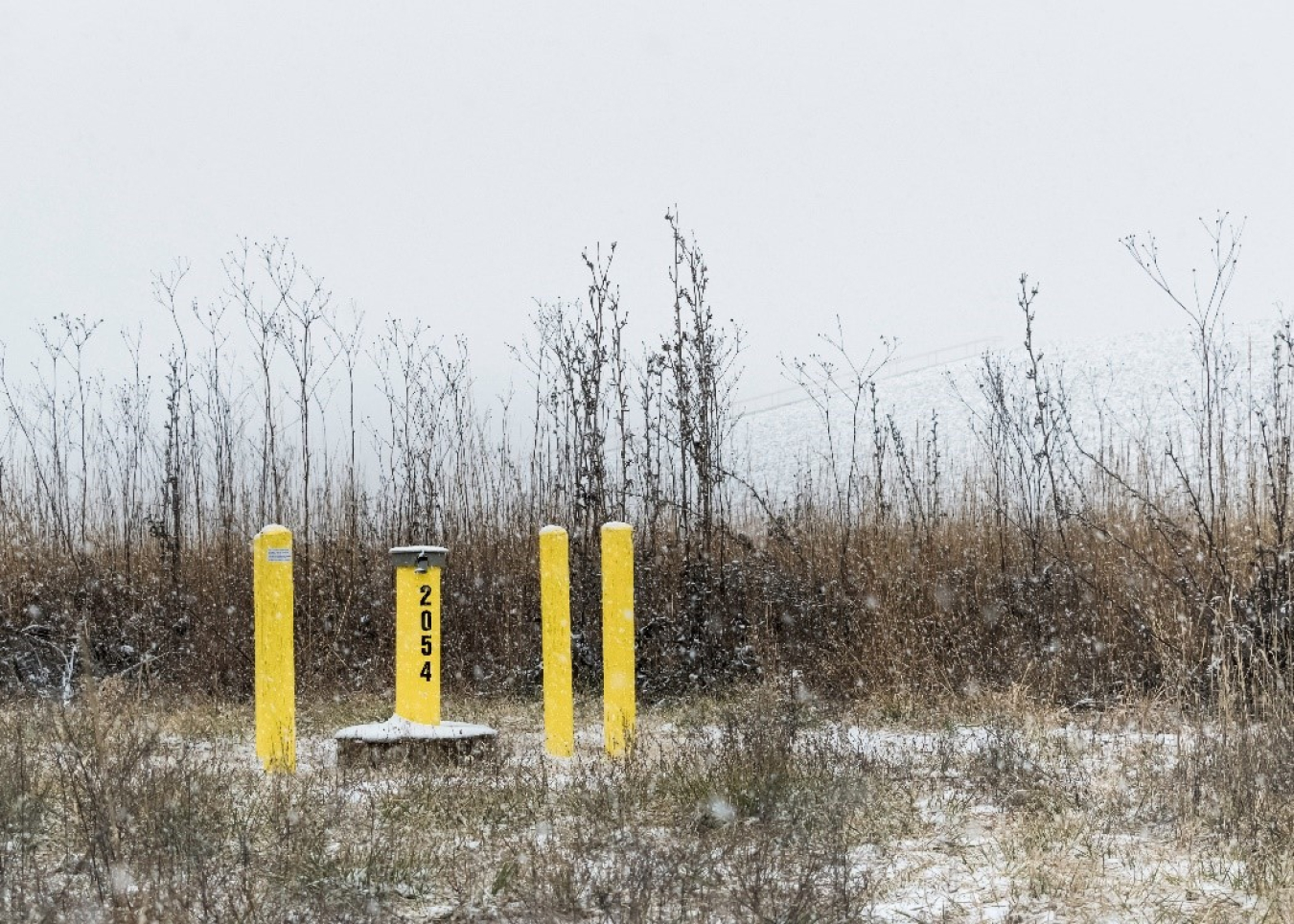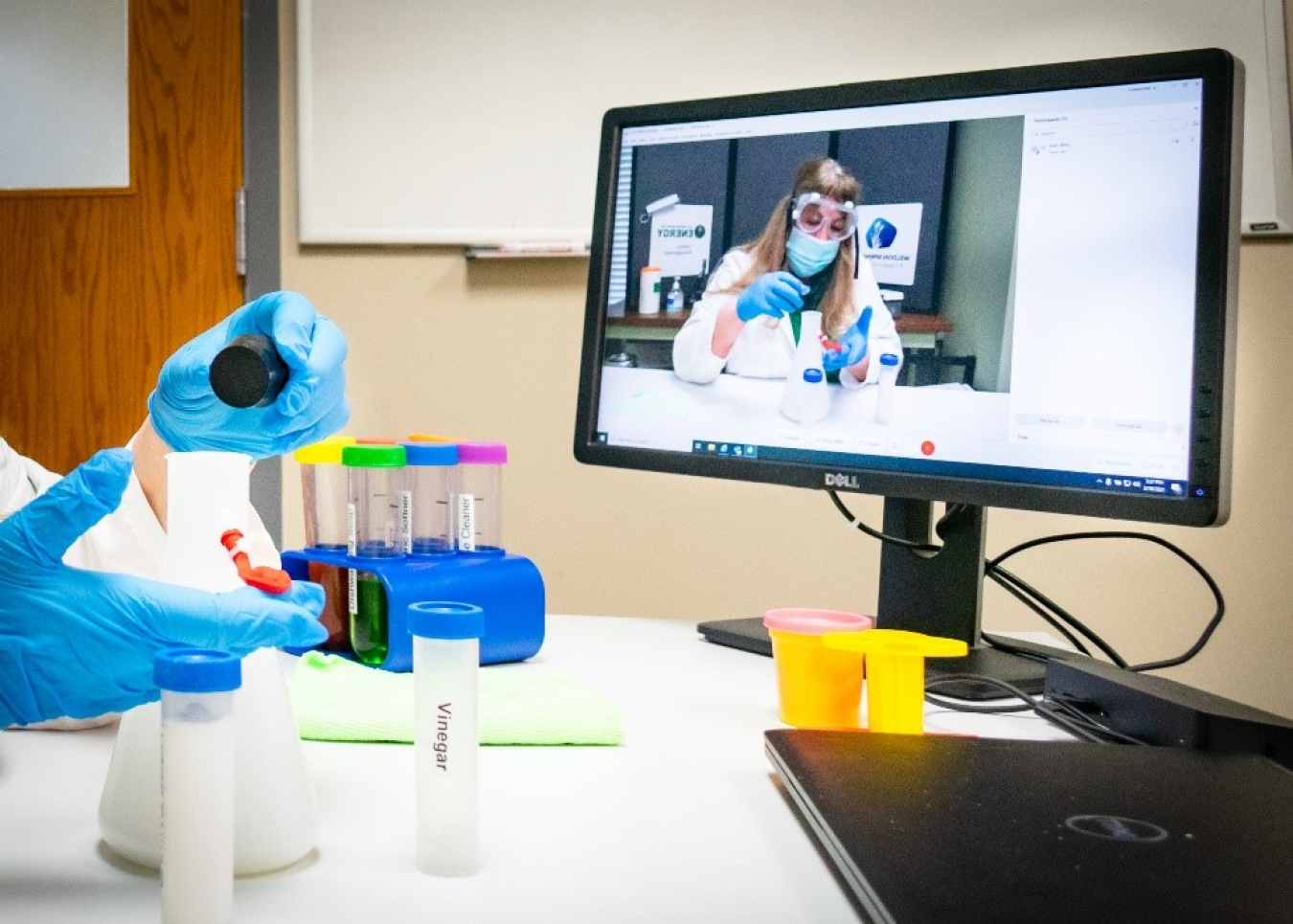The U.S. Environmental Protection Agency has recognized the Office of Legacy Management’s (LM) Weldon Spring Site for its exemplary ecological success by using it in a recent case study.
December 20, 2021
One of the monitoring wells still utilized by LM in the long-term stewardship and maintenance of the Weldon Spring Site stands out against the snowy backdrop at the site.
The U.S. Environmental Protection Agency has recognized the Office of Legacy Management’s (LM) Weldon Spring Site for its exemplary ecological success by using it in a recent case study.
The EPA case study, Cleanup Enables Creation of Recreation, Ecological Revitalization and Education Hub: Weldon Spring Quarry/Plant/Pits (USDOE) Superfund Site, highlights LM’s accomplishments in beneficial reuse, calling it a “reuse success story.” The study also details Weldon Spring’s history and cleanup as well as LM’s ongoing mission to provide long-term stewardship and engagement with future generations.
“One of the major goals of the Superfund program is to return contaminated sites into productive reuse for the surrounding communities,” said EPA Region 7 Administrator Jim Gulliford from the EPA study. “The Weldon Spring Interpretive Center provides historical and scientific educational opportunities about the site and its cleanup that will inform future generations about the area’s unique history.”

A song sparrow rests on a forb in the Howell Prairie, a 150-acre native prairie planted and cultivated at the Weldon Spring Site.
The Weldon Spring site sits about 30 miles from St. Louis in St. Charles County, Missouri. The site was once home to the largest munitions facility in the United States and manufactured more than 750 million pounds of explosives during World War II. In 1956, the Weldon Spring Uranium Feed Plant was constructed by the Atomic Energy Commission (AEC), which produced uranium metal that was shipped to various locations to be used in fuel cycles and nuclear weapons. Today, with LM’s restoration efforts, the site is a hub for recreational and educational opportunities.
In October 2020, EPA honored the site with the EPA’s Federal Facility Excellence in Site Reuse Award, which highlighted LM’s commitment to beneficial reuse and the triumph of transforming the Weldon Spring site into an amenity for visitors from all over the country to enjoy.
“With the site’s many ecological beauties, thriving wildlife, and several hiking and biking trails running through the property, it is hard to imagine it was once the site of significant contamination and industrial buildings from the WWII and Cold War eras,” said Kris Holmes, LM public affairs specialist.

A rattlesnake master, a perennial forb found in the Howell Prairie at the Weldon Spring Site, collects snow in a winter storm.
Hikers, bikers, photographers, and other guests are welcome to hike the Hamburg trail, take a self-guided tour through the nearby gardens, and take a walk through the beautiful, flourishing 150-acre Howell Prairie, which is home to hundreds of native plant species. Guests can also check out the site’s new Interpretive Center (IC), which will be used for history and STEM programming once the center reopens when COVID conditions allow.
“Beneficial reuse is a cornerstone of LM’s mission at each of our sites, and the Weldon Spring Site is a national example of the result of several agencies working in collaboration to contribute to the communities in which we operate,” said LM Weldon Spring Site Manager Rebecca Roberts.
“What makes the Weldon Spring Site a success story is that the site went from processing uranium ore and other wartime material to supporting conservation efforts, restoring the native plant life, and offering exhibits, programs, and tours to thousands of students and community members every year, from topics that range from restoration, cleanup, and the history of Weldon Spring, to deeper environmental discussions such as pollution remediation and prevention,” Holmes said.

Virtual programming continues at the Weldon Spring Site and is offered on a variety of topics including STEM, World War II and Cold War history, and environmental restoration.
Although the site remains closed because of COVID-19 restrictions, Weldon Spring IC staff have adeptly navigated the pandemic by offering virtual STEM education and home activities, and visitors are still welcome to explore the outdoor grounds of the facility.

